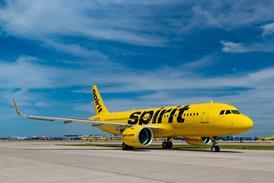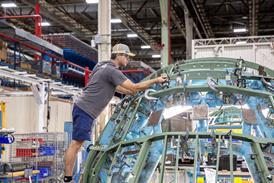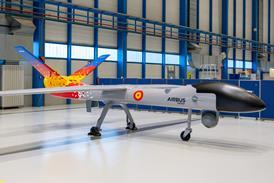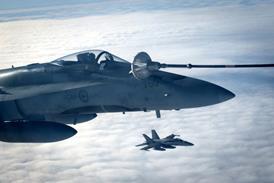European carriers maintained strong unit revenue growth in the September quarter as consumers continued to show willingness to pay the fuel surcharges imposed by mainline carriers, even though these airlines are protected to various degrees by hedging.
With low-cost carriers following in the slipstream of their mainline cousins, September-quarter revenues for the leading European carriers are nearly 9% up on the year. On the back of this, analysts have made a string of upgrades.
This poses the question: whatever happened to elasticity of demand? Consumers, increasingly hardened to the reality of higher petrol prices for their cars, largely seem to have accepted the concept of a fuel surcharge, although analysts and, no doubt, airline chief executives are on the lookout for a faltering of this stoicism.
They are, of course, also keeping track of the price of fuel. Most mainline carriers have been well hedged this year, but Chris Avery, London-based analyst at JP Morgan, warns that as this protection ceases, the airlines will be far more exposed to fuel price movements. “If fuel is around the $40 a barrel mark in the fourth quarter of 2006, there will not be too much pain,” he says. “If it is at $50 or over, however, then margins will be squeezed.”
Avery says low-cost carriers, which tend to have far weaker hedging positions, have already borne much of the pain of high fuel prices.
Bucking the trend of analyst upgrades was Andrew Lobbenberg at ABN-Amro, who reiterated his sell recommendation for Air France-KLM, despite his view that the merger is delivering results. Air France-KLM recorded operating profits of €528 million ($640 million) for the quarter, up from €339 million in 2004. However, Lobbenberg warns that the airline sector is at the top of the cycle, and it is time for investors to sell. “Airlines are trading stocks,” he says. “This looks like the peak of the revenue cycle to us and next year the fuel protection from hedging will unwind.”
But Avery says it is too early to say whether the top of the cycle has been reached. “We are deep into a cyclical upturn – it is too soon to call the top,” he says. Even if mainline carriers are hit by the unwinding of their fuel hedges, investors are in any case becoming more focused on the low-cost sector, he adds. “The financial health of the major carriers is becoming less material to the global industry.”
Indeed, Ryanair continues to post margins that are simply in a different league from other European carriers, despite what chief executive Michael O’Leary calls “difficult trading conditions characterised by record high fuel prices and intense competition” for the half-year to September.
Ancillary revenue grew by 40%, significantly more than passenger volumes, and the carrier expects this revenue stream to continue to outpace passenger growth in 2006. Replacing kerosene-guzzling Boeing 737-200s with 737-800s helped reduce non-fuel costs by 7%, although costs including fuel rose by 8%.
Forecasts up
Air France-KLM improved its guidance for the full year, indicating that full-year operating profits will be in excess of €750 million, compared with the previous estimate of €610 million.
Lufthansa also lifted its full-year guidance, and now expects full-year operating profits to come in at over €400 million. The group has been boosted by the return to health of part-owned leisure subsidiary Thomas Cook after four years in the red.
British Airways continues to be the leader of the pack when it comes to margins among Europe’s large network carriers, with its 12% margin for the quarter coming in at about the same level as last year. BA’s new chief executive, Willie Walsh, has been wielding the axe at the carrier’s Waterside headquarters, with 50% of senior managers to be made redundant, along with 30% of middle managers (see Briefing, p14). BA has also sold its interest in the London Eye observation wheel, netting the carrier £95 million ($168 million).
Elsewhere, SAS is on course for a return to the black after four years of losses, after posting operating profits of SKr802 million ($104 million) for the September quarter. “The new business model in Europe has proved successful and, combined with continued reductions in unit costs, we are strengthening the group’s position,” says group president Jørgen Lindegaard.
Neighbouring Finnair continues to be one of the stronger European performers, benefiting from its long-haul focus on the Asian market. Revenues grew by more than 13%. “We doubled the operating profit, even though the high cost of fuel consumed the fruits of our productivity programmes,” says Finnair chief executive Keijo Suila. The carrier expects growth in demand and the improvement in load factors to continue into 2006.
Elsewhere, Iberia saw operating profits for the quarter fall by nearly 30% compared with 2004, mainly because of the rise in fuel prices. Iberia has been one of Europe’s star performers, but its operating margin of 6.3% sees it drop back into the pack.
The carrier boasted a strong net figure, however, boosted by the sale of its stake in global distribution provider Amadeus for €635 million. Some €280 million of this was used to cover workforce restructuring costs, however, and a further €42.9 million was used for fleet renewal expenses.
Austrian Airlines also saw the benefits of strong traffic flows in the third quarter wiped out by the fuel price spike, and says it will be cutting capacity for the winter season to maintain load factors. “Due to the increasingly seasonal nature of demand, we have had to significantly increase flexibility,” it says. ■
COLIN BAKER/LONDON
Source: Airline Business























